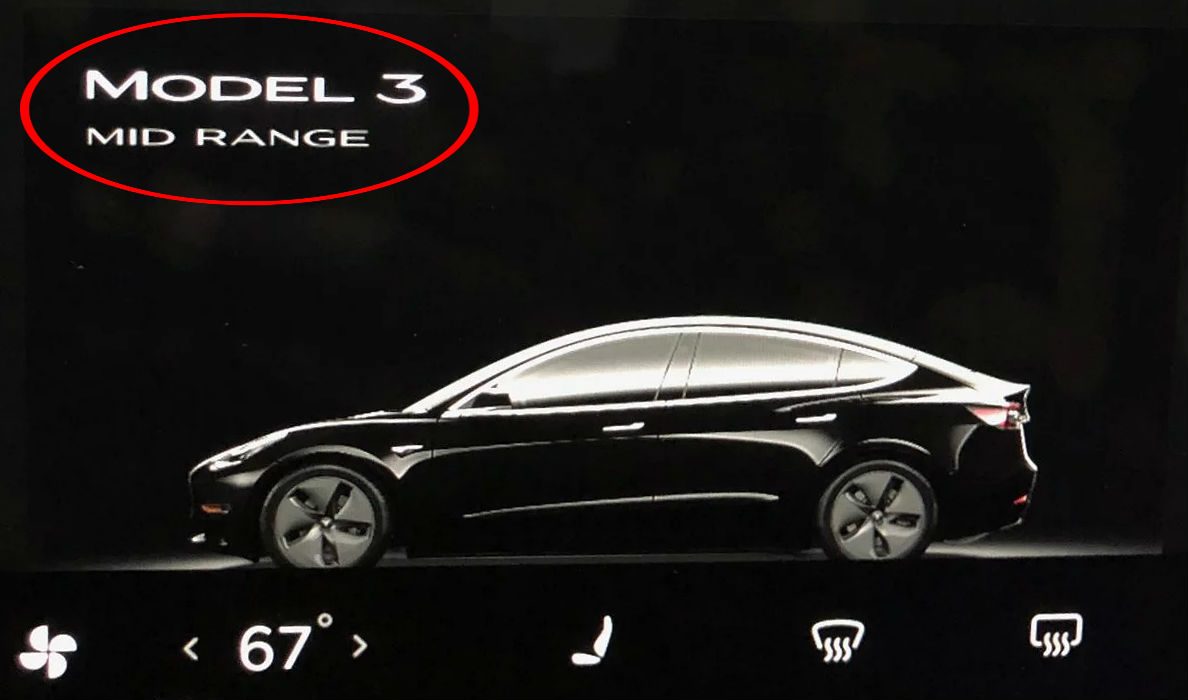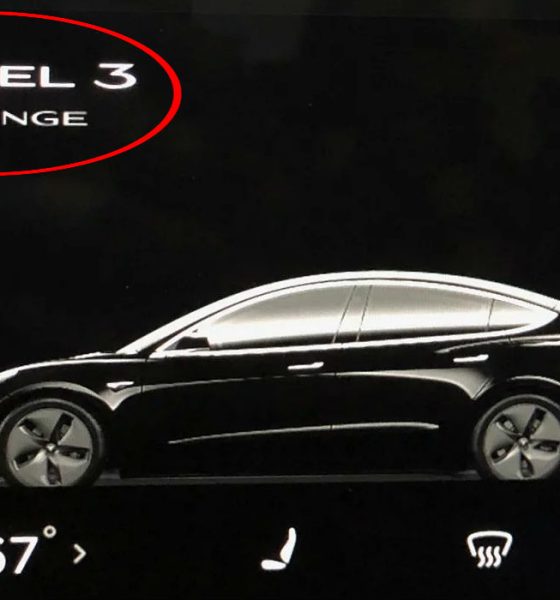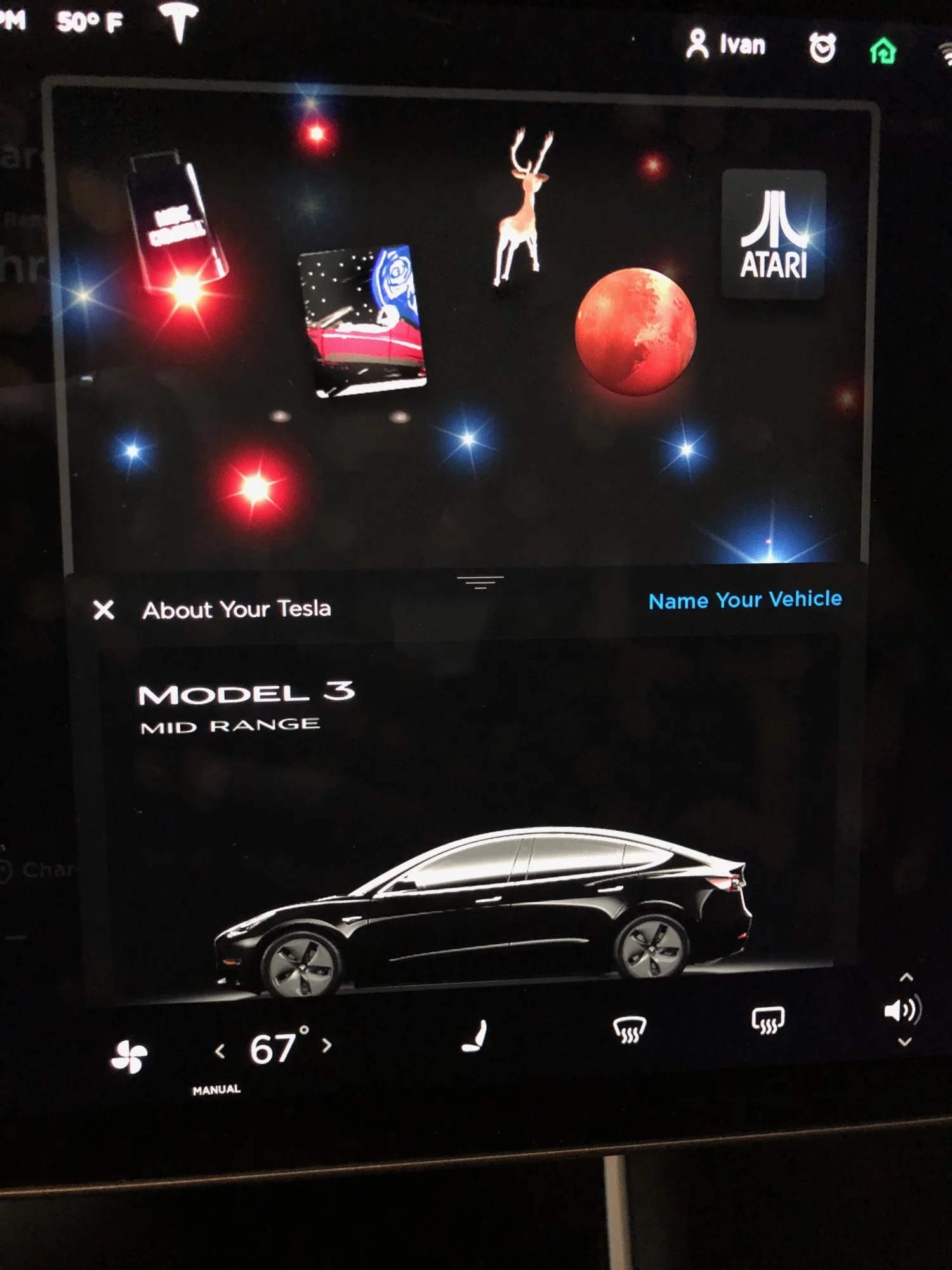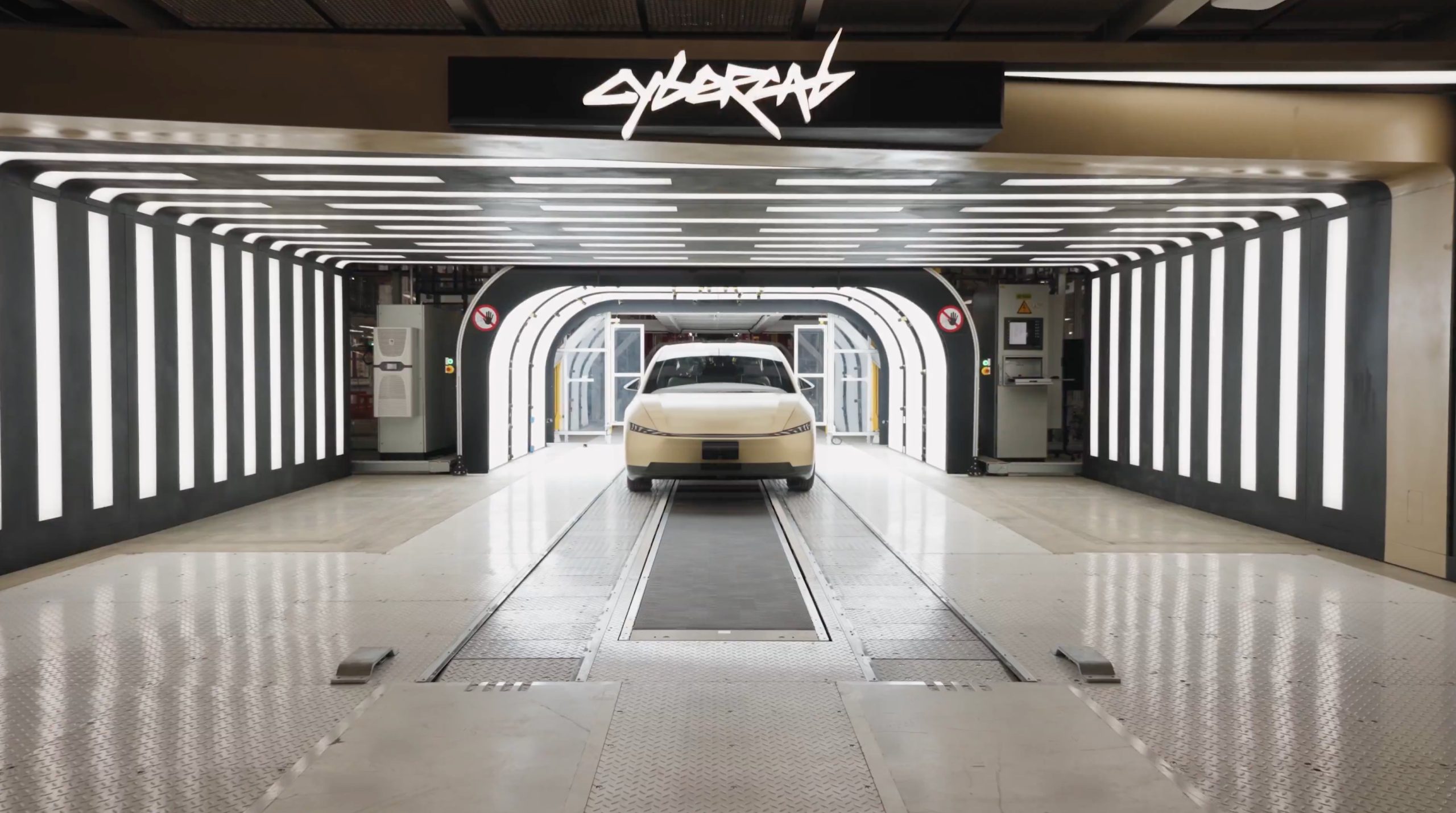

Investor's Corner
Tesla Model 3 Mid Range RWD deliveries are starting earlier than expected
Tesla appears to be learning the art of under-promising and over-delivering. When Tesla announced the Mid Range Model 3, the company noted that deliveries of the vehicle would likely begin within 6-10 weeks. If recent reports from the Tesla community are any indication, though, it appears that deliveries for the Mid Range Model 3 have already begun, less than two weeks since the vehicle was initially launched.
In a recent post, Tesla Motors Club member ivan801 noted that he had taken delivery of his Mid Range Model 3. Based on images shared by the Model 3 owner, his vehicle was a solid black variant with black interior and 18″ Aero Wheels. The vehicle’s VIN was also in the 150k-range, suggesting that Tesla registered the electric car on October. The past month, after all, saw Tesla register more than 61,000 new Model 3 VINs, starting the month with numbers in the 118k-range and ending the month with the highest VINs at the 179k-range.
Apart from the TMC member’s post, a video of a Model 3 accelerating on a freeway on-ramp was recently uploaded on YouTube as well. The video’s owner dubbed the vehicle as the “economy” variant of the Model 3 in the clip’s description, though in later comments, the uploader remarked that the vehicle was a Mid Range Model 3. The short clip featured the vehicle accelerating from a sub-20 mph rolling start, and based on the video; it appears that even Tesla’s “slowest” vehicle to date is still pretty quick on its feet.
- A Mid Range Tesla Model 3 RWD. [Credit: ivan801/Tesla Motors Club]
- A Mid Range Tesla Model 3 RWD. [Credit: ivan801/Tesla Motors Club]
A Mid Range Model 3 has been delivered to a reservation holder. [Credit: ivan801/Tesla Motors Club]
In the days prior to the car’s announcement, Elon Musk began teasing the arrival of a “lemur” on Twitter. On October 18, Tesla released the Mid Range Model 3, a lower-cost version of its electric sedan that initially cost $45,000 before incentives. Neither Tesla nor Elon Musk announced the reasons behind the “lemur” references, though the little primate’s name could be a clever play on the vehicle’s LEMR variation (Limited Edition Mid Range, perhaps?).
While the price of the Mid Range Model 3 was adjusted to $46,000 not long after the vehicle was released, the new variant does offer budget-conscious reservation holders the opportunity to join the Tesla ecosystem at a time when the full $7,500 federal tax credit is still in effect. Earlier this year, Tesla sold its 200,000th electric car in the United States, triggering a phase-out period for its vehicles’ $7,500 federal tax credit. With the phase-out period in effect, electric cars that will be delivered starting January 1, 2019, would only be eligible for a $3,750 tax credit, 50% less than those who would take delivery before the end of 2018.
A recent email from Tesla to reservation holders noted that deliveries for the Mid Range Model 3 would start in as little as four weeks. According to Tesla’s communication, “current delivery timelines are 4 weeks for the west coast, 6 weeks for central and 8 weeks for the east coast.” The electric car maker further noted that those who can pick up their vehicle directly from the Fremont factory would likely see deliveries in “under four weeks.”

The Mid Range Model 3, at its current price, represents a $3,000 savings from the Long Range RWD variant of the vehicle, which was the first version that Tesla started producing. With the price savings comes a number of compromises in terms of performance, though, as the Mid Range Model 3 features a 260-mile range, a 0-60 mph time of 5.6 seconds, and a top speed of 125 mph. In contrast, the Long Range RWD variant, which started at $49,000 before incentives, has a range of 310 miles per charge, a 0-60 mph time of 5.1 seconds, and a top speed of 140 mph.
Tesla’s deliveries for the Mid Range Model 3 comes amidst Tesla’s improving production ramp for the vehicle. The past quarters have been difficult for the electric car maker, with Elon Musk dubbing the Model 3 ramp as “production hell.” After hitting its goal of producing 5,000 Model 3 per week at the end of the second quarter, though, the winds started to shift for the company. Things continued to improve in the third quarter, with Tesla delivering 55,840 Model 3 from July to September. What’s more, the company also surprised Wall Street by posting $6.8 billion in revenue and beating earnings estimates with a GAAP profit of $312 million.
With large numbers of Mid Range Model 3 expected to be delivered in the fourth quarter, and with upgrades from Panasonic and Grohmann expected to be installed in Gigafactory sometime in Q4, the current quarter might very well become Tesla’s most impressive yet.
Watch a Mid Range Model 3 accelerate on a highway on-ramp in the video below.

Investor's Corner
Tesla Full Self-Driving statistic impresses Wall Street firm: ‘Very close to unsupervised’
The data shows there was a significant jump in miles traveled between interventions as Tesla transitioned drivers to v14.1 back in October. The FSD Community Tracker saw a jump from 441 miles to over 9,200 miles, the most significant improvement in four years.

Tesla Full Self-Driving performance and statistics continue to impress everyone, from retail investors to Wall Street firms. However, one analyst believes Tesla’s driving suite is “very close” to achieving unsupervised self-driving.
On Tuesday, Piper Sandler analyst Alexander Potter said that Tesla’s recent launch of Full Self-Driving version 14 increased the number of miles traveled between interventions by a drastic margin, based on data compiled by a Full Self-Driving Community Tracker.
🚨 Piper Sandler reiterated its Overweight rating and $500 PT on Tesla $TSLA stock
Analyst Alexander Potter said FSD is near full autonomy and latest versions showed the largest improvement in disengagements, from 440 miles to 9,200 miles between critical interventions pic.twitter.com/u4WCLfZcA9
— TESLARATI (@Teslarati) December 9, 2025
The data shows there was a significant jump in miles traveled between interventions as Tesla transitioned drivers to v14.1 back in October. The FSD Community Tracker saw a jump from 441 miles to over 9,200 miles, the most significant improvement in four years.
Interestingly, there was a slight dip in the miles traveled between interventions with the release of v14.2. Piper Sandler said investor interest in FSD has increased.
Full Self-Driving has displayed several improvements with v14, including the introduction of Arrival Options that allow specific parking situations to be chosen by the driver prior to arriving at the destination. Owners can choose from Street Parking, Parking Garages, Parking Lots, Chargers, and Driveways.
Additionally, the overall improvements in performance from v13 have been evident through smoother operation, fewer mistakes during routine operation, and a more refined decision-making process.
Early versions of v14 exhibited stuttering and brake stabbing, but Tesla did a great job of confronting the issue and eliminating it altogether with the release of v14.2.
Tesla CEO Elon Musk also recently stated that the current v14.2 FSD suite is also less restrictive with drivers looking at their phones, which has caused some controversy within the community.
Although we tested it and found there were fewer nudges by the driver monitoring system to push eyes back to the road, we still would not recommend it due to laws and regulations.
Tesla Full Self-Driving v14.2.1 texting and driving: we tested it
With that being said, FSD is improving significantly with each larger rollout, and Musk believes the final piece of the puzzle will be unveiled with FSD v14.3, which could come later this year or early in 2026.
Piper Sandler reaffirmed its $500 price target on Tesla shares, as well as its ‘Overweight’ rating.
Investor's Corner
Tesla gets price target boost, but it’s not all sunshine and rainbows

Tesla received a price target boost from Morgan Stanley, according to a new note on Monday morning, but there is some considerable caution also being communicated over the next year or so.
Morgan Stanley analyst Andrew Percoco took over Tesla coverage for the firm from longtime bull Adam Jonas, who appears to be focusing on embodied AI stocks and no longer automotive.
Percoco took over and immediately adjusted the price target for Tesla from $410 to $425, and changed its rating on shares from ‘Overweight’ to ‘Equal Weight.’
Percoco said he believes Tesla is the leading company in terms of electric vehicles, manufacturing, renewable energy, and real-world AI, so it deserves a premium valuation. However, he admits the high expectations for the company could provide for a “choppy trading environment” for the next year.
He wrote:
“However, high expectations on the latter have brought the stock closer to fair valuation. While it is well understood that Tesla is more than an auto manufacturer, we expect a choppy trading environment for the TSLA shares over the next 12 months, as we see downside to estimates, while the catalysts for its non-auto businesses appear priced at current levels.”
Percoco also added that if market cap hurdles are achieved, Morgan Stanley would reduce its price target by 7 percent.
Perhaps the biggest change with Percoco taking over the analysis for Jonas is how he will determine the value of each individual project. For example, he believes Optimus is worth about $60 per share of equity value.
He went on to describe the potential value of Full Self-Driving, highlighting its importance to the Tesla valuation:
“Full Self Driving (FSD) is the crown jewel of Tesla’s auto business; we believe that its leading-edge personal autonomous driving offering is a real game changer, and will remain a significant competitive advantage over its EV and non-EV peers. As Tesla continues to improve its platform with increased levels of autonomy (i.e., hands-off, eyes-off), it will revolutionize the personal driving experience. It remains to be seen if others will be able to keep pace.”
Additionally, Percoco outlined both bear and bull cases for the stock. He believes $860 per share, “which could be in play in the next 12 months if Tesla manages through the EV-downturn,” while also scaling Robotaxi, executing on unsupervised FSD, and scaling Optimus, is in play for the bull case.
Will Tesla thrive without the EV tax credit? Five reasons why they might
Meanwhile, the bear case is placed at $145 per share, and “assumes greater competition and margin pressure across all business lines, embedding zero value for humanoids, slowing the growth curve for Tesla’s robotaxi fleet to reflect regulatory challenges in scaling a vision-only perception stack, and lowering market share and margin profile for the autos and energy businesses.”
Currently, Tesla shares are trading at around $441.
Investor's Corner
Tesla bear gets blunt with beliefs over company valuation

Tesla bear Michael Burry got blunt with his beliefs over the company’s valuation, which he called “ridiculously overvalued” in a newsletter to subscribers this past weekend.
“Tesla’s market capitalization is ridiculously overvalued today and has been for a good long time,” Burry, who was the inspiration for the movie The Big Short, and was portrayed by Christian Bale.
Burry went on to say, “As an aside, the Elon cult was all-in on electric cars until competition showed up, then all-in on autonomous driving until competition showed up, and now is all-in on robots — until competition shows up.”
Tesla bear Michael Burry ditches bet against $TSLA, says ‘media inflated’ the situation
For a long time, Burry has been skeptical of Tesla, its stock, and its CEO, Elon Musk, even placing a $530 million bet against shares several years ago. Eventually, Burry’s short position extended to other supporters of the company, including ARK Invest.
Tesla has long drawn skepticism from investors and more traditional analysts, who believe its valuation is overblown. However, the company is not traded as a traditional stock, something that other Wall Street firms have recognized.
While many believe the company has some serious pull as an automaker, an identity that helped it reach the valuation it has, Tesla has more than transformed into a robotics, AI, and self-driving play, pulling itself into the realm of some of the most recognizable stocks in tech.
Burry’s Scion Asset Management has put its money where its mouth is against Tesla stock on several occasions, but the firm has not yielded positive results, as shares have increased in value since 2020 by over 115 percent. The firm closed in May.
In 2020, it launched its short position, but by October 2021, it had ditched that position.
Tesla has had a tumultuous year on Wall Street, dipping significantly to around the $220 mark at one point. However, it rebounded significantly in September, climbing back up to the $400 region, as it currently trades at around $430.
It closed at $430.14 on Monday.










